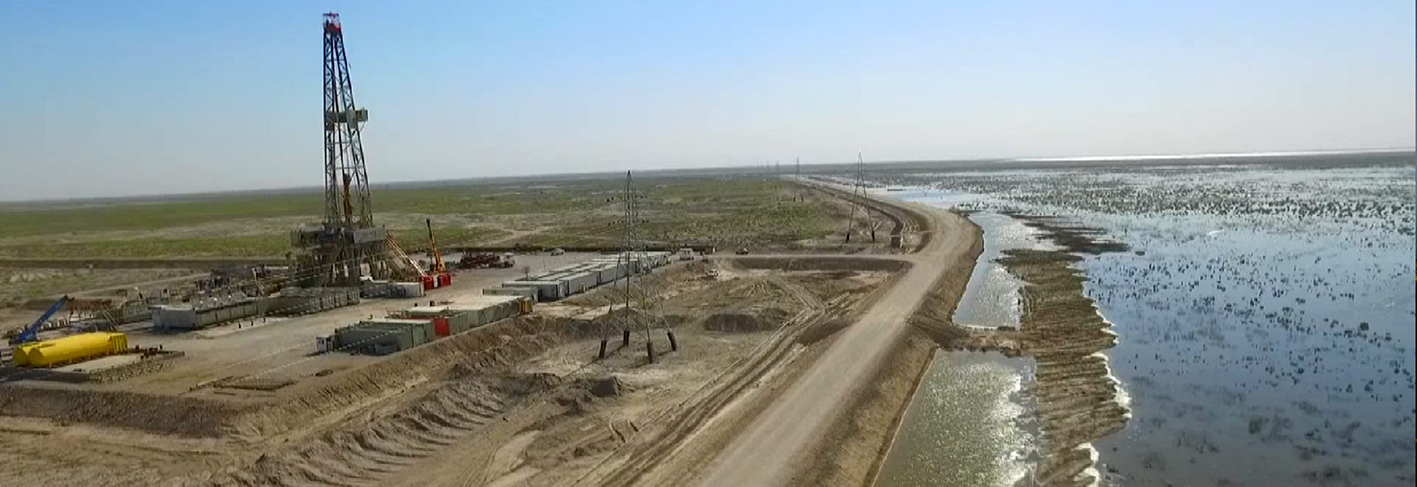Crude oil production from the giant Azadegan Oilfield near the Iraqi border has seen a dramatic rise since Chinese companies were booted out of the field in 2014 after repeated delays in fulfilling contractual obligations, an official at the Petroleum Engineering and Development Company (PEDEC) in charge of the field's development said.
"Azadegan's output, standing at180,000 barrels per day, could have experienced a much bigger surge, if Iranian contractors were tasked with the development venture earlier," Touraj Dehqani was also quoted as saying by Shana, Oil Ministry's news portal, on Thursday.
Dehqani noted that when China National Petroleum Corporation, the previous contractor of the field, abandoned the project in 2014, only 25 wells had been drilled at the site, while PEDEC has completed drilling operations for more than 100 wells since then.
Pointing to South Azadegan field production, the official added that the output has reached 100,000 bpd and operations to boost production level have gained momentum.
Located 100 km west of the provincial city of Ahvaz, South Azadegan is estimated to hold 33 billion barrels of oil in place. It is part of the West Karoun oil block in Khuzestan, which holds 67 billion barrels of crude oil.
"The field's development started three years ago and 30 domestic companies have contributed to the project's first phase," he said.
The field's second phase will be developed via a tender within the framework of Iran Petroleum Contract, the country's new model of contracts for oil and gas projects.
According to Oil Minister Bijan Namdar Zanganeh, multinationals, including Italian oil and gas firm Eni, Royal Dutch Shell, France's Total, Japan's Inpex and Malaysia's Petronas, have submitted their master development plans to expand Azadegan Oilfield.
West Karoun, Iran's top priority for raising crude production to restore the market share it lost to international sanctions, includes Mansouri, Yaran, Yadavaran as well as North and South Azadegan joint fields. The block holds an estimated 67 billion barrels of oil in place.
Asked about North Azadegan Oilfield, Dehqani said currently 80,000 barrels of crude are extracted from the field and further production rise depends on attracting foreign investment and getting access to cutting-edge know-how.
Complicated Formations
"Some oilfields have complicated geological formations, which makes drilling a nightmare for contractors," he said, noting that state-of-the-art methods can also help domestic firms increase oil recovery.
According to Dehqani, different oil recovery techniques are assessed to achieve the best result in each field depending on its structure.
"Foreign and domestic contractors should determine a method for maintaining and raising the rate of production. Some companies opt for water injection and some prefer gas injection among other methods," he said.
Research shows that enhanced oil recovery methods can increase production from a well to up to 75% of its in-place reservoirs. Oil and gas fields have a life cycle of 10-50 years, depending on their size and geological formations. Production hits a plateau for two to three years before the extraction rate drops by 1-10% annually.
The average rate of recovery from Iran's oilfields is around 25%, but it should reach 40%. In-place oil reserves are estimated at 800 billion barrels.
Officials say raising the recovery rate by merely 1% is equivalent to adding 8 billion barrels to production, which would generate $400 billion at current crude prices.


